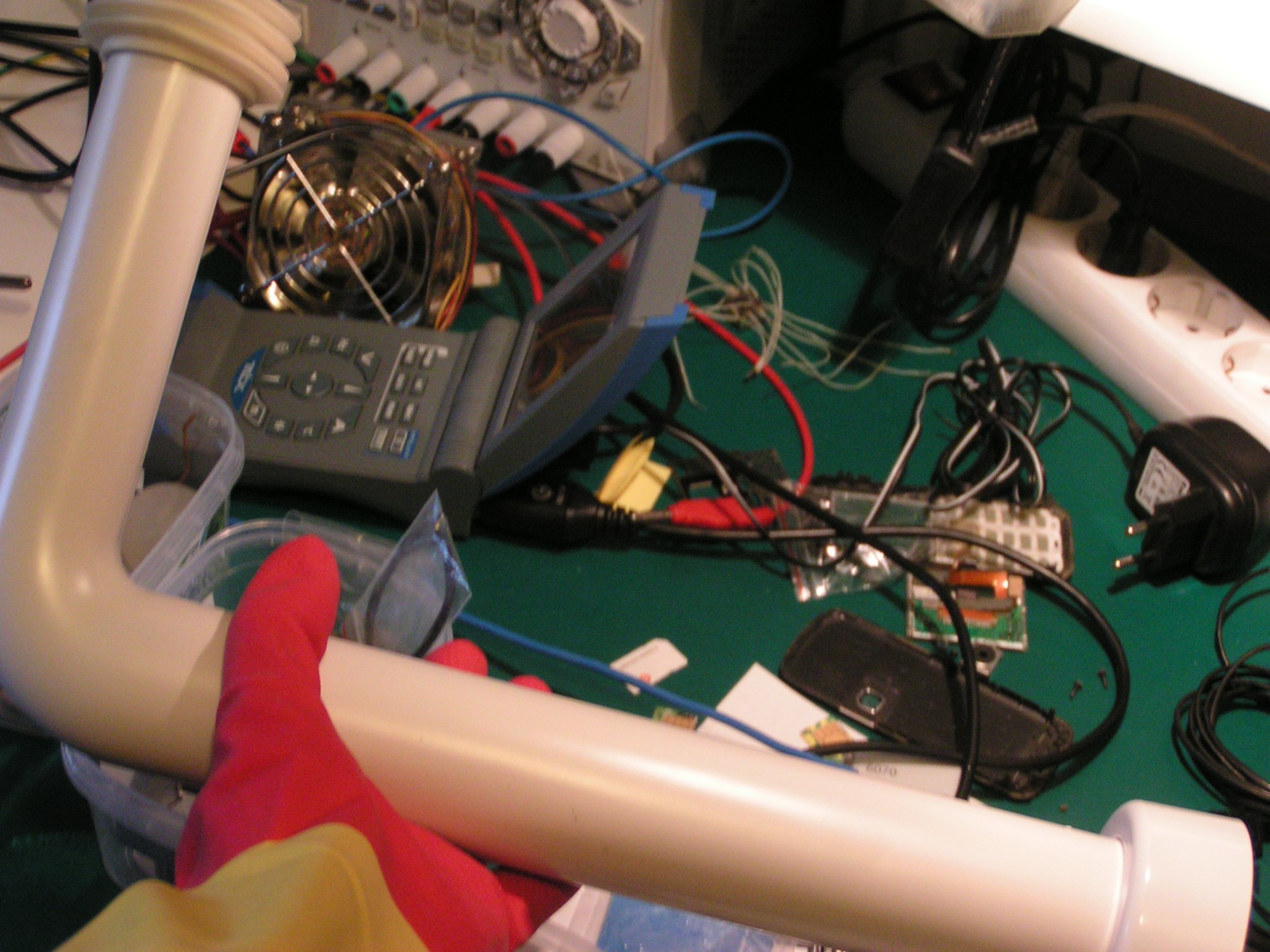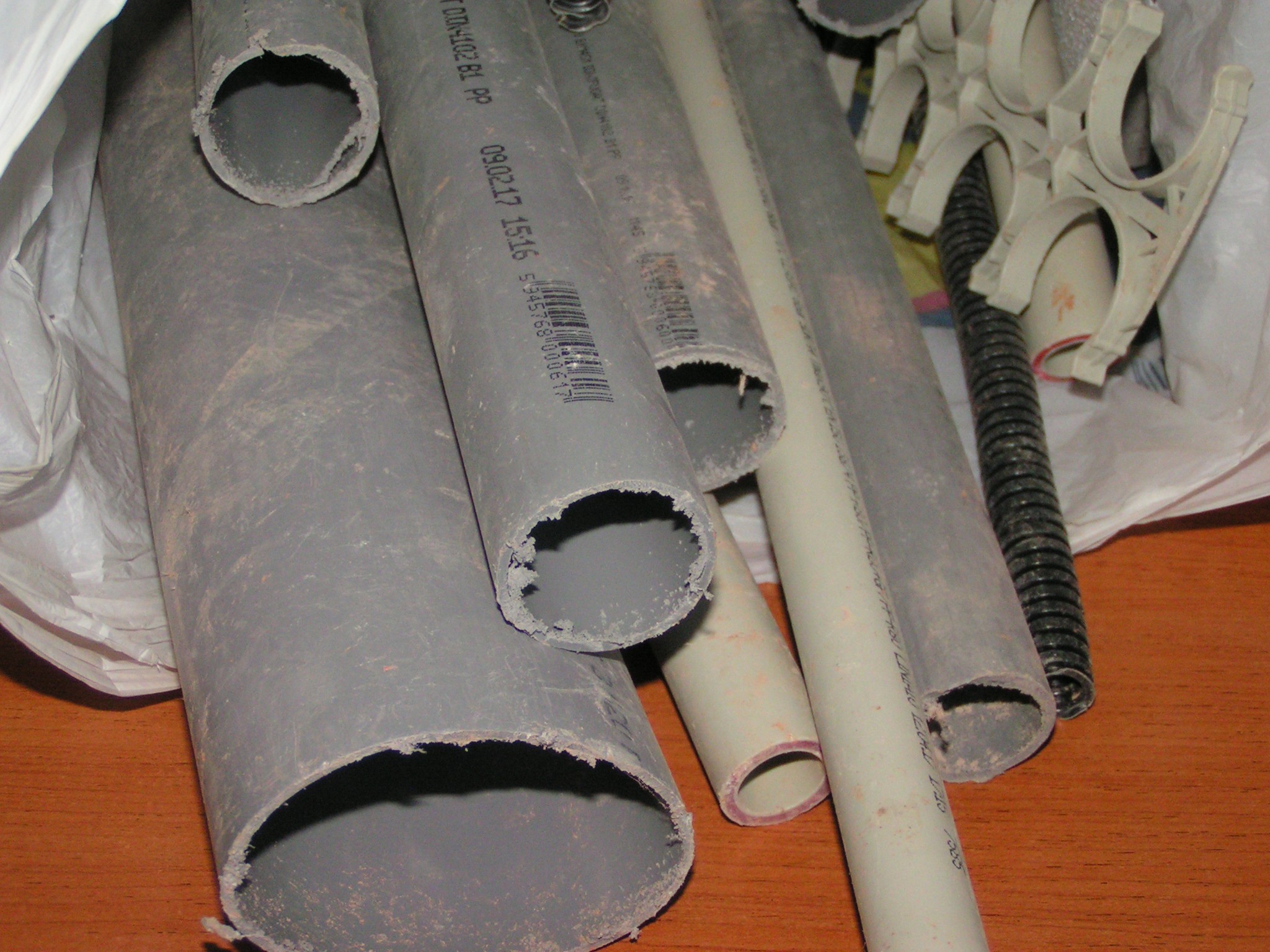Yesterday found a nice plastic pipe with different diameter on each size:
The idea was to cut 2 rings, one from each side of the pipe, then put the rings one inside the other, in order to make a gimbal type articulation, and glue the motor in the gimbal center, so the motor could be tilted.
Felt like the 2 diameters were not enough, and went outside for a dumpster dive at a construction site. Found a lot of pipe leftovers, with various diameters:
This morning, started to estimate the required tilted angle and the robot speed for a given RPM. That was the epiphany moment.
I'm a complete fool because: the motors are from a cassete-tape player. A cassete-tape player moves the tape with a rod of about 2 mm in diameter. The tape speed is 4.76 cm/s. So, if the robot will have a wheel of 2 mm in diameter, it will travel just fast enough, with about 5cm/s. But the ball is about 40 mm in diameter, this will be too fast. Even more, in the cassete-tape mechanic, the motor turns the capstan rod through a belt, and that belt reduces the RPM about 6 more times.
In conclusion, for the same motor with a 40 mm ball direct-drive, the robot will have a top speed of
4.76 cm/s * 6 * 40 mm / 2 mm = 5.7 m/s = 18.7 feet/s
Way too fast, damn!
Bad robot.
Failed to give him a drivetrain, better I should give him a nice name instead.
:o)
 RoGeorge
RoGeorge

Discussions
Become a Hackaday.io Member
Create an account to leave a comment. Already have an account? Log In.
Well, you can use the cheap geared motors that are available for robots -- you can't claim there are no gears anymore, but you still get the holonomic transmission and fluent speed control...
Are you sure? yes | no
That's exactly why I was hesitate to do so. Also my SG90 are very sloppy, and I'm not sure if 2 of them can have the same RPM ever, even with the electronics completely removed. They feel very cheap, and they were cheap, indeed.
The second thought will be to use 3 steppers from a not assembled yet 3D printer, just for the Proof of Concept. The steppers are very strong and easy to control, except they are pretty heavy, It doesn't feel like the little SG90 will be able to tilt a 365 grams stepper.
Will see.
Are you sure? yes | no
I have not powered any motors other than a servo on my project and just wondered if you could use PWM to power the cassette motors.....
Are you sure? yes | no
PWM should work just fine to lower the RPM. The problem is that, at a lower RPM, the motor looses most of it's torque, so the motor can be made turn slow, but then it will have no 'force' to move the robot.
PWM or a lower DC voltage will be the same for the motor, because the current through a coil raise linearly, so it's not possible to 'push' a lot of current at once in only one PWM pulse. The motor coils will average the PWM pulses no matter what.
I will use other motors for driving the platform. You were right about working with scavenged parts, they are not exactly what is needed.
:o)
Are you sure? yes | no